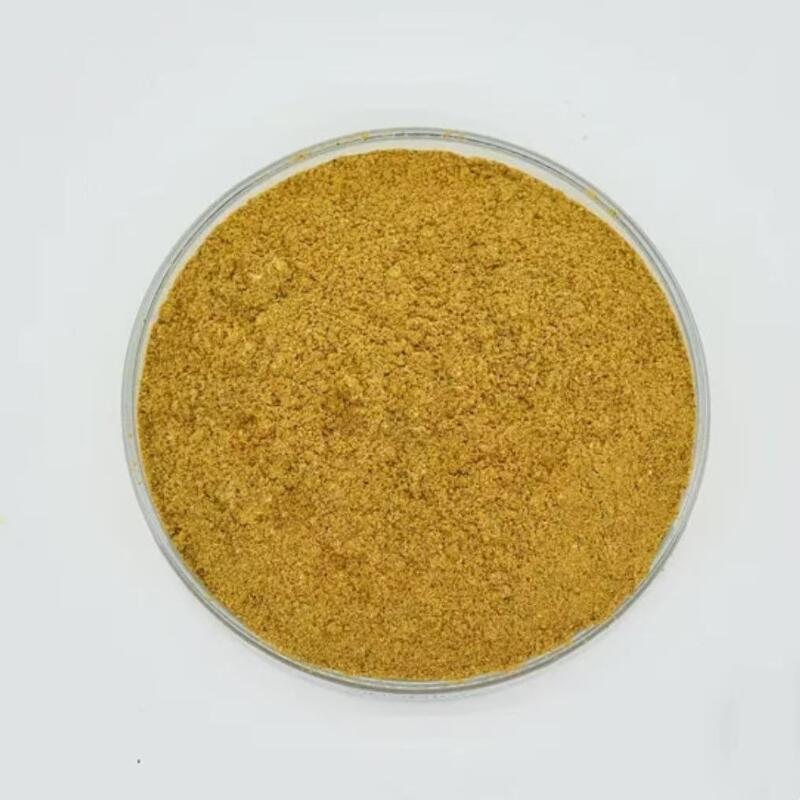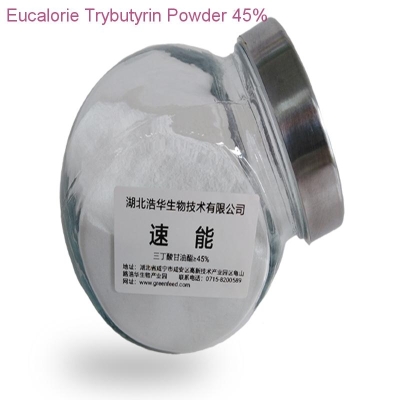The impact and opportunity of China's accession to WTO on feed industry and breeding industry
-
Last Update: 2002-03-08
-
Source: Internet
-
Author: User
Search more information of high quality chemicals, good prices and reliable suppliers, visit
www.echemi.com
Introduction: first, China's accession to the WTO will face severe challenges to the raw material industry of China's feed industry and the associated industry of feed work (i.e planting industry and breeding industry) The challenges mainly come from three aspects: 1 The price of feed raw materials will be more obviously affected by the fluctuation of international market After China's accession to the WTO, with the increase of feed additives and corn imports, China's feed additive production and feed processing industry will be impacted, and the fluctuation of raw material prices will be more obvious 2 The downstream industry of feed industry -- the product export linkage of breeding industry will not be eased, which in turn will further restrict the development of feed industry After China's accession to the WTO, it has created precious space for China to make full use of the low labor cost, develop labor-intensive industries such as aquaculture, give full play to its advantages, improve the international competitiveness of meat food But at present, first, China has not joined the World Veterinary organization, and some countries have very strict restrictions on the import of meat food in China; second, China has just started the construction of no specific epidemic area, and for the scattered breeding of thousands of households, some additives in the feed have not been added within a limited time limit, resulting in the residue of some substances in animal products exceeding the standard, which brings a certain degree of export to animal products This will restrict the development of feed industry 3 In order to create an equal competitive environment, WTO rules limit and restrict the support and protection space for feed industry Because China's feed industry is in a growing period, one side is connected with the planting industry, the other side is serving the breeding industry, which is closely related to the factors of farmers' becoming rich and the supply and price of national meat and food Therefore, since the introduction of value-added tax in 1994, it has enjoyed the preferential policy of exemption from value-added tax But according to the rules of WTO, these tax protection policies are prohibited In this way, it is not only not conducive to the healthy development of my feed industry, but also 70% of the cost of the breeding industry comes from feed The price of feed products including tax, will certainly increase the cost of the breeding industry, which will reduce the income of farmers Qjd 2 Opportunity qjd 1 The reduction of tariff will allow us to buy a large number of raw materials from other countries, as well as some that are not available in China In this way, the nutrition of feed can be greatly improved And it can reduce the cost of feed, which is conducive to the sale of feed China now vigorously advocates the development of animal husbandry, which provides a stage for our feed industry, which is also our advantage After China's accession to WTO, China's pig production still has advantages over other countries such as Europe, the United States and Japan Qjd (1) the low cost of production factors and the reduction of feed price are conducive to enhancing the competitive advantage of China's pig industry The cost of pork production in the United States is 10.87 yuan per kilogram (1994 / 95), and that in Japan is 30.26 yuan In China, it is only a little more than 7 yuan (1995), including 7.29 yuan for farmers to raise pigs in bulk, 7.55 yuan for state-owned collective health pigs and 7.02 yuan for specialized households Compared with developed countries, the advantage of cheap labor will not change in a long period of time Qjd (2) although the import tariff of pork in China has been greatly reduced (from 45% to 12%), the increase of import quantity is limited Because the consumption of Chinese residents has a strong preference for fresh pork, and the bulk import product can only be frozen pork, so the market of imported pork will be limited Qjd (3) China's frozen pork products are mainly exported to the Russian market, and the most attractive export market is Japan At present, the per capita pork quantity in Vietnam is only 14.49kg, which is 41% of the per capita pork quantity in China; that in Thailand is 5.1kg, which is only 15% of that in China Therefore, it will have a good prospect to expand the market share of pork products in these countries Qjd 3 After China's accession to the WTO, the impact on China's poultry and egg industry is the advantages and disadvantages of qjd The annual output of eggs in China is more than 20 million tons, ranking the first in the world, accounting for 43% of the world's total output Experts believe that, on the whole, after China's accession to the WTO, the impact on China's egg industry is good and bad First, China will enjoy unconditional most favored nation treatment as existing member countries; second, because eggs are fresh, not easy to store and transport, and have little impact on the domestic market; third, foreign cheap corn and soybeans will enter the domestic market, and feed prices will drop; fourth, major egg importing countries are basically adjacent to Asia, which is beneficial to the United States in terms of transportation costs , Brazil and other European and American countries compete; fifthly, China has characteristic chicken species, such as grass eggs and black eggs, which are fragrant, nutritious and popular with domestic consumers; sixthly, the export price of eggs in China is low According to the analysis, the export price of eggs in China is more than 800 US dollars per ton, 200 US dollars lower than the average in Asia, which is very competitive Qjd 4 China's dairy industry has a promising future after entering WTO With the continuous growth of China's macro-economy, the demand for dairy products in China has increased rapidly in recent years, and the dairy industry has become a bright spot in the development of China's agriculture and food processing industry However, at present, the annual per capita consumption of dairy products in the world is 92 kg, that in developed countries is 258.3 kg, and that in Asia is more than 40 kg, while that in China is only 7.2 kg According to the prediction of China Dairy Industry Association, the consumption of dairy products in China will increase substantially in the next five years, especially for liquid milk The annual growth rate is expected to reach 10 kg and the total output will reach 13.5 million tons After China's accession to the WTO, China's dairy market is expected to present two characteristics: first, dairy products from Australia, New Zealand and other countries with relatively low production costs increase rapidly in imports; second, with the improvement of the degree of market segmentation of dairy products, the focus of competition will be to play the brand effect, and the trade of bulk dairy products will not increase; restricted by the transportation costs, raw milk imports There will be no significant increase; the import of finished dairy products with large profit margin will increase significantly; in this regard, domestic dairy enterprises have great achievements, especially in the production of liquid milk closely related to sex life, which can play an advantage and expand market share Qjd 3 After China's accession to the WTO, China's animal husbandry should take countermeasures: qjd 1 Adhere to the market-oriented and adjust the industrial structure of animal husbandry Qjd will vigorously develop animal products with comparative advantages, adjust the leading products and increase the proportion of high-quality products according to the changes of international market environment and the characteristics of China's resources and alternative advantages Qjd 2 Strengthen the prevention and Quarantine of epidemic diseases, improve the quality of livestock and poultry products qjd In the future, reducing the price of livestock and poultry products will no longer be an important means to improve the market competitiveness, and ensuring that the products meet the specified quality standards will be the key to competitiveness In the past decade, due to the subjective and objective reasons such as environmental pollution, serious epidemic situation, imperfect relevant standards (veterinary drugs, feed and food), backward detection means and equipment, lax supervision, and economic interests driving in the process of production and circulation, the safety of animal products has become a serious problem that endangers people's health, animal husbandry survival, and affects export earnings According to the national survey of livestock and poultry diseases, there are over 100 kinds of livestock and poultry diseases in China Since the 1970s, 37 kinds of new livestock and poultry diseases have been added, causing millions of pigs, cattle, sheep and chickens to die every year, with a direct economic loss of up to 10 billion yuan In addition to the diseases, all kinds of drugs, chemical substances, heavy metals, biological hormone residues and pollution are increasingly harmful to the health quality of livestock products Therefore, it is necessary to strengthen the prevention and control of epidemic diseases and improve the quality of livestock products QJD
This article is an English version of an article which is originally in the Chinese language on echemi.com and is provided for information purposes only.
This website makes no representation or warranty of any kind, either expressed or implied, as to the accuracy, completeness ownership or reliability of
the article or any translations thereof. If you have any concerns or complaints relating to the article, please send an email, providing a detailed
description of the concern or complaint, to
service@echemi.com. A staff member will contact you within 5 working days. Once verified, infringing content
will be removed immediately.







